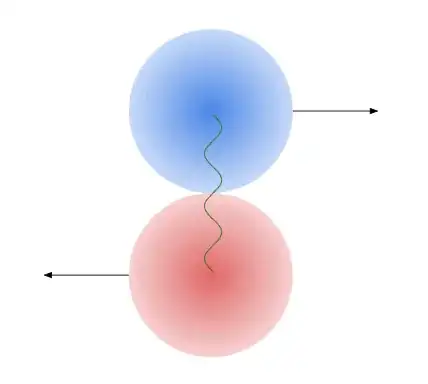Besides what other people have said, it's worth looking at the numbers that enter the uncertainty relation
$$
\Delta x\cdot\Delta p \gtrsim \hbar.
$$
A quick web search tells me that the momentum in the LHC is adjusted to ppm precision, i.e. $\Delta p = 10^{-6}\times 13\,\textrm{TeV}\approx 10^7 \textrm{eV}$. Since we need to localize the particles in the transverse plane to have them pass through the same point (using naïve language), we have to insert transverse momentum into the uncertainty relation. The crossing angle of the two beams in the interaction point of the CMS detector is $285\,\mu\textrm{rad}$, so the transverse momentum fraction and its respective uncertainty are roughly 0.014% of the respective numbers, giving us $\Delta p_t \approx 10^{-4} \times 10^7\textrm{eV}= 10^3\textrm{eV}$.
In useful units $\hbar \approx 2\times 10^{-7}\, \textrm{eV}\,\textrm{m}$. With this we find that we can localize the beam particles to a precision of
$$
\Delta x \gtrsim \frac{\hbar}{\Delta p_t} \approx 10^{-10}\,\textrm{m}$$ in the transverse plane without running into any difficulties with the uncertainty principle. This is significantly larger than a proton (whose radius is approximately $1\,\textrm{fm}$), but that's where the other answers complete the picture.
To relate this number to reaction probabilities, I have to expand a bit: what is the task in a particle physics calculation? Typically, we set up two colliding beams. So we have a certain number $L$ of particles (of a certain kind, with a certain energy, polarization, you name it) passing through a certain area in a certain time. This is called Luminosity with dimension $[L] = \textrm{cm}^{-2} \textrm{s}^{-1}$. What we want to know from the fundamental laws of physics, and what we want to compare to the data are the number $N$ of reactions of a certain type per unit time $t$. This is proportional to the luminosity since we can assume the reactions are independent. The proportionality constant is called the cross section $\sigma_X$ ("sigma"), and this is the quantity we actually have to calculate. I.e.
$$
\textrm{d}N = L\cdot\sigma_X\textrm{d}t.
$$
Now in a typical particle physics experiment $L$ is a fixed property of the accelerator, whereas $\sigma_X$ is specific to the reaction we want to study.
We see that the interesting quantity $\sigma_X$ has the dimensions of an area. Given its additive nature between different reactions, we can think of $\sigma_X$ as the actual transverse dimension of the beam particle, if it happens to undergo reaction $X$. So in this sense interacting particles aren't actually point-like, but they have an area which depends on the specific reaction. To relate this to the previous number: a relatively rare process such as Higgs production at the LHC has a cross section of approximately $20\cdot 10^{-40}\,\textrm{m}^2$, which would correspond to a length scale of $10^{-20}\,\textrm{m}$.
Now you may ask: how can reactions happen, when the length scales are so different? That's where large numbers come into play: for each particle, we cannot know it's transverse coordinate better than $10^{-10}\,\textrm{m}$, but give me lots of particles focused to this precision, and one pair in $10^{10}\cdot 10^{10}$ will be within the cross-sectional area. The same applies to the actual beam spot sizes used in experiments.
